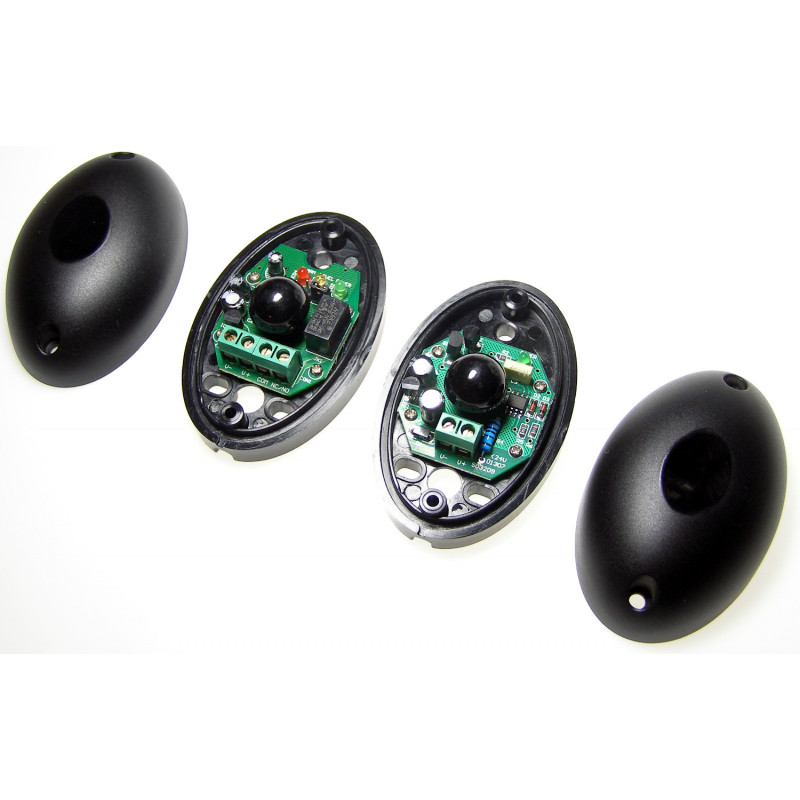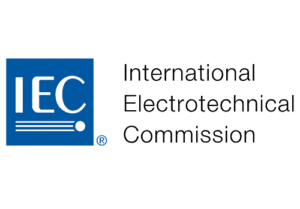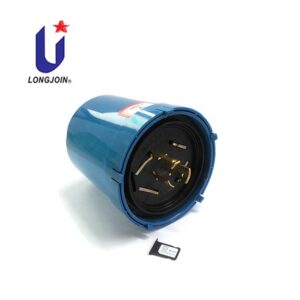What Does a Photocell Consist Of?
Introduction
Understanding the components of a photocell is fundamental to grasping its role in the lighting industry. A photocell, also known as a photoelectric sensor or light sensor, comprises several key elements that enable it to detect ambient light levels and trigger lighting adjustments accordingly. Delving into the anatomy of a photocell provides insight into its functionality and importance within lighting systems.
Composed of semiconductor materials such as cadmium sulfide (CdS) or silicon, a photocell’s core structure enables the conversion of light energy into electrical signals. Further examination reveals supplementary elements like a protective housing, wiring terminals, and a control circuit. In this guide, we’ll dissect the makeup of a photocell, exploring each component’s role in facilitating efficient and automated lighting control.
What Are the Components of a Photocell?
Photocells, also known as photoresistors or light-dependent resistors (LDRs), play a crucial role in controlling lighting systems based on the amount of ambient light present. Here’s a breakdown of the key components:
Semiconductor Material
At the heart of a photocell lies a semiconductor material, typically cadmium sulfide (CdS) or cadmium selenide (CdSe). These materials exhibit a unique property where their electrical resistance changes in response to variations in incident light intensity.
Encapsulation
To protect the sensitive semiconductor material from environmental factors like moisture and contaminants, photocells are encapsulated in a housing or casing. This encapsulation ensures the longevity and reliability of the device.
Electrodes
Photocells feature two electrodes connected to the semiconductor material. These electrodes facilitate the flow of current through the semiconductor when exposed to light. One electrode is typically made of a conductive material like metal, while the other may be a transparent conductor like indium tin oxide (ITO).
Connection Leads
In some cases, a protective coating is applied over the semiconductor material to further shield it from external factors and enhance its durability. This coating may also help in optimizing the photocell’s sensitivity to light.
Protective Coating
Connection leads are wires attached to the electrodes, allowing the photocell to be integrated into a circuit. These leads enable the transmission of electrical signals between the photocell and other components of the lighting system, such as a control unit or power supply.
Housing
The photocell is housed within a sturdy casing or enclosure, which not only provides physical protection but also allows for easy installation and mounting in various lighting fixtures or control systems.
Optical Filter (Optional)
Depending on the specific application and environmental conditions, a photocell may incorporate an optical filter to limit the wavelengths of light that can reach the semiconductor material. This filter helps in fine-tuning the photocell’s responsiveness to specific light sources or ambient conditions.
By combining these components, photocells effectively sense changes in light levels and regulate the operation of lighting systems accordingly, contributing to energy efficiency, safety, and convenience in various indoor and outdoor lighting applications.
Types of Photocells
1. Cadmium Sulfide (CdS) Photocells
Cadmium sulfide photocells are one of the most common types. They work by varying their resistance based on the amount of light falling on them. When it’s dark, their resistance is high, and as light increases, their resistance decreases. This change in resistance is used to control the switching of lights, making them ideal for outdoor lighting fixtures like streetlights and security lights.
2. Photodiodes
Photodiodes are semiconductor devices that generate a flow of current when exposed to light. They are faster and more sensitive than CdS photocells, making them suitable for applications where rapid response times are needed, such as in automatic camera exposure control systems and optical communication devices.
3. Phototransistors
Similar to photodiodes, phototransistors also generate current in response to light. However, they have a built-in transistor that amplifies the current, providing higher sensitivity and better signal-to-noise ratio. Phototransistors are commonly used in light sensors for automatic brightness control in displays and in proximity sensors for detecting objects.
4. Infrared (IR) Photocells

These photocells are all about detecting infrared radiation, not visible light. They’re great for places where the amount of light might change due to things like weather or nearby structures. IR photocells keep things steady, making them perfect for landscape lighting or pathways where you want consistent illumination.
5. Ultrasonic Photocells
Now, these photocells are a bit fancier. They use ultrasonic waves to not only sense light but also detect motion. So, they’re like a combo deal for outdoor security lights. When they sense a change in light or movement, they kick your lights into action, adding an extra layer of safety and security.
Each type of photocell has its own advantages and limitations, making them suitable for different lighting applications based on factors such as sensitivity, response time, and environmental conditions. Choosing the right type of photocell is crucial to ensure optimal performance and energy efficiency in lighting systems.
What Are the Operating Principles of Photocells for Lighting Systems?
Photocells, also known as photoelectric cells or light sensors, operate based on the principle of detecting light levels to control lighting systems. Here’s a breakdown of their operating principles:
Photocells consist of a semiconductor material that generates a flow of electrical current when exposed to light. When light hits the surface of the photocell, it stimulates the semiconductor material, causing electrons to be released. This creates an electric current proportional to the intensity of the light.
The flow of current through the semiconductor material alters its resistance. In bright light conditions, more electrons are excited, resulting in a lower resistance and higher current flow. Conversely, in low light conditions, fewer electrons are excited, leading to higher resistance and lower current flow.
Photocells are designed with a threshold setting that determines the level of light at which they trigger a response. This threshold can be adjusted to suit the specific requirements of the lighting system. When the ambient light level surpasses the threshold, indicating darkness or low light conditions, the photocell activates the lighting system.
In addition, the variation in current flow caused by changes in light intensity serves as a control signal for the lighting system. Photocells are typically integrated into lighting control circuits, where the detected light level dictates whether the lights should be turned on, off, or dimmed.
One of the key benefits of using photocells in lighting systems is their contribution to energy efficiency. By automatically adjusting the lighting output based on ambient light levels, photocells ensure that lights are only activated when necessary, reducing energy consumption and minimizing wasted light.
Photocells are also versatile and can be deployed in various indoor and outdoor environments. They are capable of accurately sensing natural light levels, enabling them to adapt the artificial lighting accordingly. This adaptability makes them suitable for applications ranging from street lighting to interior spaces.
Due to their solid-state construction and simple operating principle, photocells are reliable components in lighting systems. They have a long operational lifespan and require minimal maintenance, making them a cost-effective solution for controlling lighting in both residential and commercial settings.






